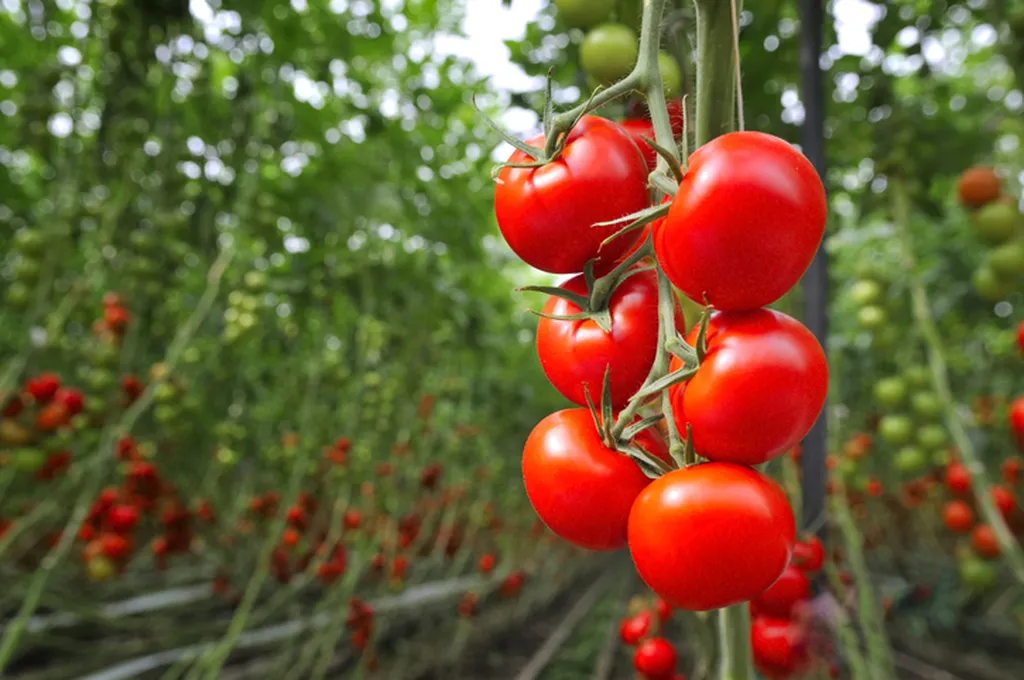In the heart of Pakistan, at the National Institute for Genomics and Advanced Biotechnology (NIGAB), a team of researchers led by Maryam Murtaza has unlocked a trove of genetic insights that could revolutionize tomato cultivation, particularly in drought-prone regions. Their study, published in the open-access journal BMC Plant Biology, delves into the intricate world of plant genomics, offering a beacon of hope for farmers and agritech innovators alike.
The research team harnessed the power of RNA-seq technology, a cutting-edge method for sequencing and analyzing the RNA transcripts present in a sample, to identify genes that respond to drought stress in tomatoes. By mining meta-transcriptomic data from the public GEO NCBI database, they conducted a comprehensive meta-analysis, pinpointing a global set of 18 drought-responsive genes. This approach, known as a Bonferroni-adjusted proportional test on one sample, is a robust statistical method that ensures the reliability of their findings.
Maryam Murtaza, the lead author of the study, explained the significance of their discovery: “These genes are part of a putative set of stress-responsive genes that are crucial for survival and adaptation under drought conditions. Our findings suggest that these genes could serve as potential targets for future functional studies and breeding applications.”
The identified genes were annotated to reveal their biological processes, molecular functions, cellular components, KEGG pathways, and plant ontology terms. Notably, the top-enriched terms included intracellular signal transduction, ribonuclease P activity, nucleolar ribonuclease P complex, glycosphingolipid biosynthesis, and lateral root apical meristem. These terms provide a roadmap for understanding how tomatoes cope with drought stress at the molecular level.
The practical implications of this research are profound. By understanding which genes are activated or repressed in response to drought, breeders can develop tomato varieties that are more resilient to water scarcity. This is particularly relevant for the energy sector, as tomatoes are a significant crop in many regions, and water scarcity is a growing concern due to climate change and increased demand for agricultural products.
Moreover, the study’s findings could extend beyond tomatoes. As Murtaza noted, “The methodologies and insights gained from this research can be applied to other crops, potentially enhancing food security and sustainability in the face of climate change.”
The research team validated their findings using qRT-PCR-based gene expression analyses, which confirmed the trends in gene expression under drought stress conditions. This validation step is crucial for ensuring the reliability and reproducibility of their results.
Looking ahead, this research opens up new avenues for functional studies and breeding applications. By targeting these drought-responsive genes, scientists can develop crops that are better equipped to handle environmental stresses, ultimately leading to higher yields and more sustainable agriculture.
In the words of Murtaza, “Our study provides a foundation for future research aimed at enhancing crop resilience and productivity. The potential impact on agriculture and food security is immense.”
As the world grapples with the challenges of climate change and water scarcity, this research offers a glimmer of hope. By unlocking the genetic secrets of drought resistance in tomatoes, Maryam Murtaza and her team at NIGAB have taken a significant step towards a more sustainable and resilient future for agriculture. Their work, published in BMC Plant Biology, is a testament to the power of genomics in addressing real-world challenges and driving innovation in the agritech sector.

